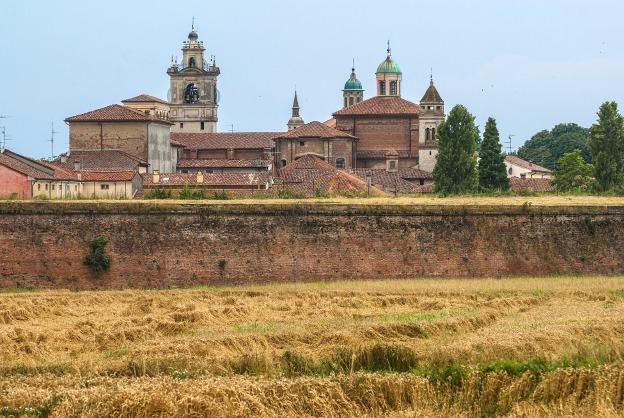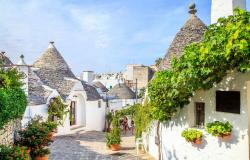Sabbioneta: Lombardy’s Ideal City of the Renaissance
ITA:

Erected in the second half of the 16th century, Sabbioneta represents the best example of the Lombard architectural style of the Renaissance period.
It was founded by Vespasiano I Gonzaga, of the powerful Gonzaga family who ruled the area for centuries, and designed according to the Renaissance principles of the Ideal City, which took inspiration from the ancient cities of the classical world.
Vespasiano I called it "Sabbioneta" ("sandy") because it was located on the sandy banks of the Po River, halfway between Parma and Mantua. He was the city’s first duke, and used it as a personal fortress and residence, embellishing it with palaces, churches and encircling it with walls.
The enlightened Vespasiano hoped to recreate a sort of Athens on a smaller scale, making it a city of art and culture; however, when he died, Sabbioneta experienced a rapid decline, and was gradually abandoned.
Yet, the urban structure and monuments have been so well preserved that Unesco inscribed it – along with Mantua - into its World Heritage List in 2008, as it represents “the implementation of the period’s theories about planning the ideal city. […] The defensive walls, grid pattern of streets, role of public spaces and monuments all make Sabbioneta one of the best examples of ideal cities built in Europe, with an influence over urbanism and architecture in and outside the continent.”
Main sights include:
The Ducal Palace, now the Town Hall;
The Teatro all'antica, the second-oldest surviving indoor theater in the world, and one of only three Renaissance theaters still in existence;
The architecturally impressive Palazzo del Giardino, a residence dedicated to otium, and Galleria degli Antichi, which housed the Gonzaga collection of antique Roman statues and hunting trophies;
The Churches of the Assunta and Carmine, as well as the Church of the Incoronata, where Vespasiano I was buried.
Eretta nella seconda metà del 16° secolo, Sabbioneta rappresenta il massimo esempio di stile architettonico rinascimentale lombardo.
Fu fondata da Vespasiano I Gonzaga, della potente famiglia dei Gonzaga, dominatori dell’area per secoli, e progettata secondo i principi rinascimentali della Città Ideale, che si ispiravano alle antiche città del mondo classico.
Vespasiano la chiamò “Sabbioneta”, da “sabbia”, perché la città si trovava sulle rive sabbiose del fiume Po, a metà strada tra Parma e Mantova. Fu il suo primo duca, e la usò come residenza e fortezza personale, abbellendola con palazzi, chiese e circondandola di mura.
L’illuminato Vespasiano sperava di ricreare una sorta di Atene su piccola scala, e di farne una città d'arte e cultura; tuttavia, alla sua morte, Sabbioneta subì un rapido declino, e fu gradualmente abbandonata.
Tuttavia, la struttura urbana e i monumenti sono stati così ben conservati che, nel 2008, l'Unesco l’ha inserita - insieme a Mantova – nel Patrimonio Mondiale dell’Umanità, in quanto rappresenta “l'attuazione delle teorie del periodo sulla pianificazione della città ideale. [...] Le mura difensive, le strade, il ruolo degli spazi pubblici e dei monumenti fanno di Sabbioneta uno dei migliori esempi di città ideale costruiti in Europa, che hanno influenzato l’urbanistica e l’architettura dentro e fuori del continente.”
Le principali attrazioni di Sabbioneta includono:
Il Palazzo Ducale, oggi sede del Municipio;
Il Teatro all’Antica, il secondo teatro coperto più antico al mondo, e uno di soli tre teatri rinascimentali ancora esistenti;
L’imponente Palazzo del Giardino, residenza dedicata all’otium, e la Galleria degli Antichi, che ospitava la collezione di statue romane antiche e trofei di caccia dei Gonzaga;
Le Chiese dell'Assunta e Carmine, e la Chiesa dell'Incoronata, dove Vespasiano I fu sepolto.











